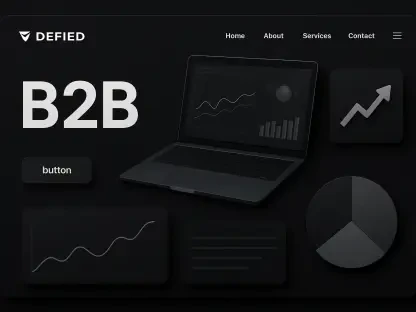Integrated, Data-Driven Marketing: Market Landscape and Significance
Every go-to-market team feels the drag of fragmented tools when customers expect instant, relevant responses across email, SMS, web, and in-app, and this is exactly where unified automation reshapes the playbook by stitching data, decisions, and delivery into one motion. The industry’s center of gravity has shifted to platforms that connect marketing, sales, and customer experience, replacing piecemeal workflows with coordinated, lifecycle-centric engagement. That shift reflects a simple truth: execution speed and data integrity now decide whether brands meet rising expectations or fall behind more nimble competitors.
Cross-channel automation spans CRM, CDP, marketing automation, analytics, identity resolution, and consent management, but adoption patterns diverge by segment. SMB teams tend to favor consolidated suites for faster time-to-value, while enterprises often blend suites with best-of-breed components to cover complex use cases. B2B buyers prioritize buying group visibility, account-level rollups, and lead-to-opportunity orchestration; B2C teams emphasize real-time triggers, frequency control, and merchandising logic. Vertical nuances matter as well: SaaS leans on trial-to-paid journeys and retention loops, retail/ecommerce relies on catalog-aware triggers and fulfillment signals, and financial services requires rigorous governance and audit trails.
Vendor categories fall into integrated platform suites, modular best-of-breed tools, and an emerging layer of low-code ecosystems that invite cross-functional collaboration without heavy engineering queues. The business value runs through a consistent arc: less tool sprawl, cleaner data, faster iteration, clearer attribution, and stronger privacy alignment as first-party data strategies replace third-party dependency. In this landscape, Rocket CRM’s expansion positions the platform to consolidate orchestration, make data reliably actionable, and help teams move from campaign blasts to adaptive, journey-based programs.
Trends and Market Trajectory in Cross-Channel Automation
Forces Reshaping Automation: Technology, Behaviors, and Opportunities
Real-time data activation has become the norm, not a luxury. AI-assisted decisioning now tunes subject lines, content blocks, send times, and channel choices in response to fresh signals, while adaptive workflows pivot seamlessly when preferences, consent, or lifecycle stage changes. Static rules are giving way to models that learn from outcomes and fold those learnings back into the next message or offer.
Moreover, the market is migrating from one-off campaigns to lifecycle-centric engagement that spans onboarding, expansion, renewal, and reactivation. Low-code and no-code toolkits extend control to marketers and CX managers, compressing build cycles and inviting operations and analytics partners into shared, auditable canvases. Channel convergence means email, SMS, in-app, and web personalization live under a single plan, which allows teams to manage cadence, suppression, and handoffs without juggling disjointed calendars. The payoff shows up in operational efficiency, personalization at scale, and tighter sales alignment.
Market Metrics, Growth Signals, and Forward-Looking Indicators
Consolidation is accelerating as organizations sunset overlapping tools and standardize on unified platforms with deep integrations. Performance metrics highlight the rationale: reduced time-to-launch, higher engagement and deliverability, faster conversion velocity, and improved CAC-to-LTV ratios when orchestration and data hygiene move in lockstep. Gains are most pronounced where identity resolution, consent enforcement, and frequency controls are enforced at the platform layer.
Forecasts point to continued double-digit growth for cross-channel automation driven by first-party data mandates and compliance obligations. Leading indicators now include integration density, API utilization, data freshness SLAs, and automation coverage across the journey map. Vendors that translate those signals into practical controls—versioned workflows, testable branches, and real-time suppression—are set to command outsized share as buyers prioritize reliability as much as feature breadth.
Obstacles to Unified Automation and Practical Paths Forward
Persistent data fragmentation creates inconsistent profiles, duplicate records, and stale attributes that corrode personalization and reporting. Channel silos further compound the problem, as uncoordinated email and SMS sequences either overload recipients or leave gaps that stall progress. Operational complexity adds friction: brittle rules, hand-coded segments, and sparse documentation slow iteration and increase the risk of misfires.
Rocket CRM addresses these pain points with an enhanced workflow builder that introduces adaptive logic, lifecycle triggers, and visual governance to reduce manual upkeep. A unified customer record merges profile, consent, and engagement data into a single source of truth for precise segmentation and suppression. Cross-channel orchestration brings email and SMS into one plan, enforcing cadence and quiet hours while streamlining channel selection based on context.
Low-code configuration shortens time-to-value, empowering non-technical users to launch, test, and refine automations without a ticket queue. Expanded analytics surface journey drop-offs, segment disparities, and content performance, guiding targeted experiments rather than broad guesses. Security and governance anchor the stack with role-based access, audit trails, and data protections that maintain trust while enabling responsible access for day-to-day operators.
Compliance, Privacy, and Security in Multi-Channel Engagement
Compliance obligations span GDPR and UK GDPR, CCPA and CPRA, CAN-SPAM, TCPA, CASL, and ePrivacy rules, each imposing specific consent, disclosure, and enforcement requirements. Consent and preference management is therefore foundational: accurate opt-in capture, clear opt-out flows, channel-level permissions, and defensible audit trails ensure that automation remains lawful and respectful. In practice, consent-aware triggers and dynamic suppression lists prevent violations and protect brand equity.
Data protection depends on encryption in transit and at rest, least-privilege access, and rigorous retention policies that honor the purpose of collection. Deliverability and sender reputation also fall under operational hygiene: authentication via SPF, DKIM, and DMARC, list cleanliness, and controlled throttling safeguard reach while minimizing complaint rates. Robust risk management—spanning incident response, monitoring, and change control for automated journeys—keeps teams in control even as complexity scales.
Operationalizing all of this requires designing compliant journeys from the start. Quiet hours, regional variations, and lawful channel selection should be encoded into workflow logic, not left to manual checks. Rocket CRM’s governance features help encode these guardrails, enabling teams to move quickly without sidestepping the obligations that define modern engagement.
The Road Ahead: Innovations, Disruptors, and Strategic Direction
Emerging capabilities are reshaping how teams plan and execute. Predictive next-best-action engines prioritize the most likely step to move a customer forward, while generative content assists accelerate creative iteration under clear brand constraints. Event streaming and real-time audiences collapse the lag between signal and response, ensuring that offers, reminders, or service updates land at the moment of highest relevance.
Disruptors keep pressure on the stack. Privacy-first ecosystems and third-party cookie deprecation push more intelligence into first-party environments, raising the stakes for API-first interoperability. Customers now assume messages will be timely, consented, and consistent across channels; anything less feels careless. Growth opportunities are emerging in first-party data activation, B2B buying group coordination, post-sale lifecycle automation, and partner ecosystems that extend value beyond the core platform.
Rocket CRM’s roadmap aligns with these currents. Deeper data connectivity and external integrations bring richer context to decisioning. More granular controls allow complex branching, channel arbitration, and frequency management without code sprawl. Scalable governance supports larger teams and regulated sectors, while continuous analytics enhancements focus on experiment design, causal insights, and outcomes that revenue leaders can use.
Summary, Implications, and Recommendations
Rocket CRM’s expanded automation suite centralizes workflows, data, channels, and measurement to streamline engagement across the full customer lifecycle. The combination of an adaptive workflow builder, a unified customer record, cross-channel orchestration, and decision-grade analytics enables teams to replace fragmented execution with coordinated programs that respect consent and optimize performance. By reducing operational drag and enforcing governance, the platform converts strategy into consistent, real-time action.
Implications span the revenue engine. Marketing gains faster setup, consistent execution, and tighter test-and-learn loops. Sales benefits from shared visibility, cleaner handoffs, and timely alerts that surface intent when it matters. Operations and IT reduce integration overhead while strengthening security and oversight, lowering total cost of ownership relative to multi-tool stacks. Customers experience more relevant, timely communication with fewer contradictions and clearer choices.
Actionable next steps followed from these findings. Organizations prioritized a unified customer record and consent framework before scaling automation. Teams began with high-impact journeys—onboarding, reactivation, and nurture—then expanded through iterative testing guided by diagnostics on drop-offs and segment response. Governance matured with role definitions, approvals, and change management embedded in workflow tooling. Interoperability investments—APIs, event streams, and data contracts—future-proofed integrations, while a balanced scorecard tracked engagement quality, operational speed, compliance, and revenue impact.









